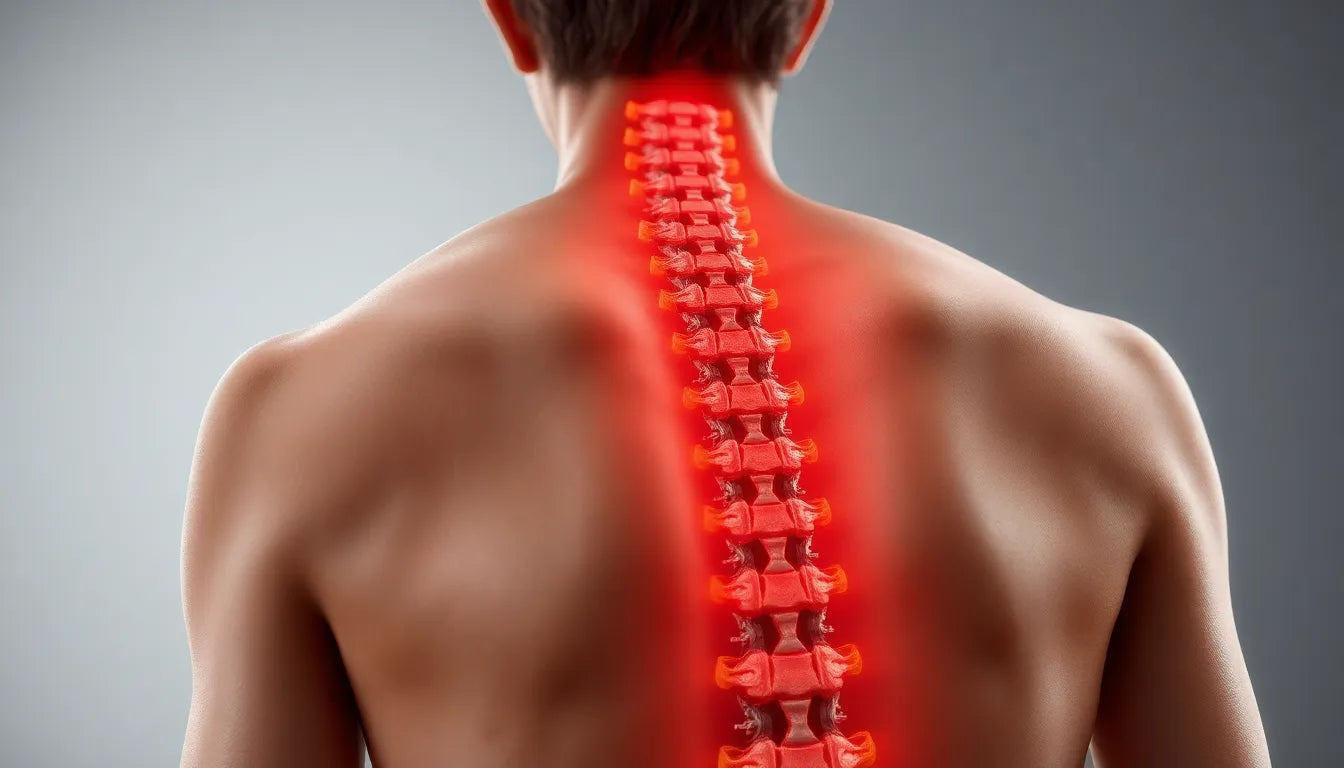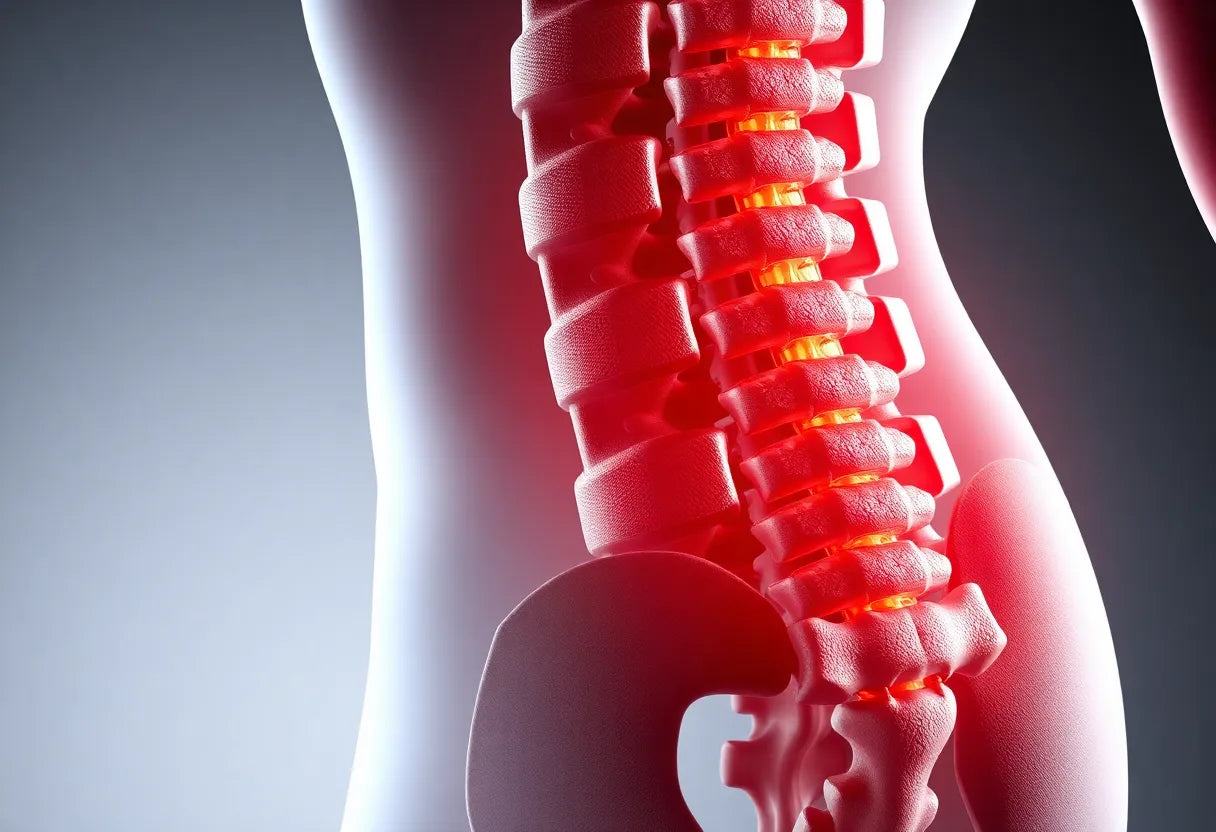Understanding the intricacies of a pinched sciatic nerve is crucial for anyone experiencing discomfort in the lower back and legs. The sciatic nerve, known as the longest and largest nerve in the body, extends from the lower back through the hips and buttocks and down each leg. This nerve is responsible for connecting the spinal cord with the leg and foot muscles, making it essential for movement and sensation in these areas.
What is sciatica and its causes?
Sciatica is a condition characterized by pain along the path of the sciatic nerve. The most common cause of sciatica is a pinched or compressed sciatic nerve, which can occur due to various reasons. Herniated discs, bone spurs, or spinal stenosis are typical culprits that lead to nerve compression. When this happens, the nerve becomes irritated, resulting in the classic symptoms associated with sciatica.
Recognizing the symptoms
The symptoms of a pinched sciatic nerve can vary but often include pain that radiates from the lower back down to the leg. This pain can range from a mild ache to a sharp, burning sensation. It's not uncommon for individuals to experience numbness, tingling, or muscle weakness in the affected leg. In some cases, the pain may worsen with prolonged sitting, sneezing, or coughing. It's important to note that severe symptoms, such as cauda equina syndrome, require immediate medical intervention. This condition can lead to bladder dysfunction, severe numbness, and even paralysis if not treated promptly.
Addressing sciatic nerve pain is vital for improving one's quality of life. Left untreated, the pain can become debilitating, interfering with daily activities and overall well-being. Fortunately, there are various treatment options available that can provide relief and help manage the condition effectively.
comprehensive treatment options for a pinched sciatic nerve
When dealing with a pinched sciatic nerve, it's essential to explore a range of treatment options that can help alleviate pain and improve mobility. The approach to treatment often starts with conservative methods before progressing to more advanced interventions if necessary.
conservative treatments
Conservative treatments are the first line of defense against sciatic nerve pain. These methods focus on reducing inflammation and relieving pain without invasive procedures.
Rest and activity modification are crucial in preventing further irritation of the nerve. It's important to balance rest with gentle movement to avoid stiffness and promote healing. Over-the-counter pain relievers, such as NSAIDs like ibuprofen and naproxen, can help manage pain and reduce inflammation. Acetaminophen is another option for those who cannot take NSAIDs.
Cold and heat therapy offer immediate relief for some individuals. Applying an ice pack to the affected area can reduce swelling, while a heating pad can help relax tense muscles. Additionally, muscle relaxants may be prescribed to alleviate muscle spasms associated with sciatic nerve irritation.
physical therapy and exercises
Physical therapy plays a vital role in the recovery process by strengthening the muscles supporting the spine and improving flexibility. Core-strengthening exercises and posture correction are particularly beneficial in relieving sciatic pain. Physical therapists often recommend specific exercises tailored to individual needs, such as hamstring stretches, pelvic tilts, and knee-to-chest movements, which can help reduce pressure on the sciatic nerve.

Lumbar support belt
Stabilises og lindrer lænden – ideel ved ischias, smerter og diskusprolaps.
injection therapies
For those who do not find relief from conservative treatments, injection therapies may be considered. Epidural steroid injections are a common procedure where corticosteroids are injected near the affected nerve root to reduce inflammation and pain. These injections should be image-guided for precision, and it's important to note that there are limitations on frequency, typically up to three injections per year, to avoid potential side effects.
advanced treatment options
When conservative and injection therapies do not provide sufficient relief, advanced treatment options, including surgical interventions, may be necessary.
surgical interventions
Surgery is considered when all other treatments have failed, and the pain significantly impacts daily life. Discectomy and microdiscectomy are common procedures where portions of a herniated disc are removed to relieve nerve pressure. These surgeries are minimally invasive, with recovery times varying from a few weeks to a few months, depending on the individual's health and the extent of the procedure.
Laminectomy is another surgical option, involving the removal of part of the vertebral bone to create more space for the nerve. This procedure is often recommended for patients with spinal stenosis causing nerve compression.
emerging technologies in treatment
Innovative technologies are continually being developed to improve treatment outcomes for sciatic nerve pain. Systems like the DRX9000™ traction system and the AlterG® Anti-Gravity Treadmill™ offer promising non-surgical alternatives. These technologies focus on spinal decompression and reducing gravitational forces on the body, respectively, providing relief and promoting healing without invasive procedures.
In conclusion, a comprehensive approach to treating a pinched sciatic nerve involves a combination of conservative, physical, and advanced treatment options. By exploring these methods, individuals can find effective solutions tailored to their specific condition, ultimately improving their quality of life and reducing the impact of sciatic nerve pain.
Effective lifestyle and self-care strategies
Incorporating lifestyle and self-care strategies can significantly aid in managing and preventing a pinched sciatic nerve. Ergonomic and biomechanical modifications in daily activities are essential to reduce nerve compression and alleviate discomfort. Ensuring proper sitting mechanics by using supportive chairs and lumbar supports can help maintain a healthy posture and reduce strain on the lower back.

Men's Posture Shirt™ - Black
Aktiverer og støtter din ryg for en bedre holdning og mindre smerte.
Home management strategies are vital for long-term relief. Consider using seat cushions that promote proper alignment and reduce pressure on the sciatic nerve. Additionally, practicing correct lifting techniques and avoiding prolonged sitting can prevent further irritation. Incorporating regular breaks to stretch and move around during long periods of sitting is also beneficial.
Prevention and long-term management
Preventing a pinched sciatic nerve involves maintaining a healthy lifestyle and adopting habits that support spinal health. Keeping a healthy weight reduces the strain on the lower back, decreasing the risk of nerve compression. Regular physical activity, such as walking or swimming, strengthens the muscles supporting the spine, promoting overall back health.
Practicing good posture, both while sitting and standing, is crucial in preventing sciatic nerve issues. Ergonomic workstations and adjustable chairs can help maintain proper alignment during work hours. Additionally, avoiding repetitive activities that may exacerbate nerve compression is essential. Incorporating regular stretching exercises, especially for the hamstrings and lower back, can improve flexibility and reduce tension.
Frequently asked questions
What is the fastest way to relieve sciatic nerve pain?
For immediate relief from sciatic nerve pain, consider using cold and heat therapy. Applying an ice pack can reduce inflammation, while a heating pad can relax tense muscles. Specific exercises, such as knee-to-chest stretches and gentle yoga, can also provide quick relief.
When should I see a doctor for sciatica?
It is advisable to seek medical attention if you experience severe or worsening symptoms, such as significant leg weakness, loss of bladder or bowel control, or severe pain that does not improve with self-care. These symptoms could indicate a more serious condition requiring prompt intervention.
Can ergonomic products really help with sciatica?
Yes, ergonomic products can support posture correction and reduce pressure on the sciatic nerve. Items like lumbar supports, ergonomic chairs, and seat cushions can promote proper alignment and alleviate discomfort associated with sciatica.
Is surgery always necessary for a pinched sciatic nerve?
Surgery is not always necessary for a pinched sciatic nerve. Many individuals find relief through conservative treatments, physical therapy, and lifestyle modifications. Surgery is typically considered only when these approaches fail to alleviate pain, or when there are severe symptoms.
How long does it typically take to recover from sciatica?
Recovery from sciatica varies depending on the individual and the severity of the condition. Most people experience significant improvement within a few weeks to a few months with appropriate treatment and self-care strategies. Consistent adherence to a comprehensive treatment plan is key to a successful recovery.
Kilder
- Cleveland Clinic. (n.d.). "Sciatica."
- UC Health. (n.d.). "Pinched Nerve."
- Mayo Clinic. (n.d.). "Sciatica: Diagnosis & Treatment."
- American Academy of Orthopaedic Surgeons. (n.d.). "Sciatica."
- Spine Connection. (n.d.). "Sciatica & Pinched Nerve."
- Dignity Health. (n.d.). "Sciatic Nerve Pain: Diagnosis and Treatment."
- NHS. (n.d.). "Sciatica."
- National Center for Biotechnology Information. (n.d.). "Sciatica."
- Mayo Clinic. (n.d.). "Sciatica: Symptoms & Causes."
- HSS Health. (n.d.). "12 Ways to Get Sciatica Relief in 8 Minutes or Less."
- Alliance Ortho. (n.d.). "What are the Treatment Options for Sciatica Pain?"
- Hospital for Special Surgery. (n.d.). "Sciatica."
- Cleveland Clinic. (n.d.). "Pinched Nerves."
- Penn Medicine. (n.d.). "Sciatica."


















